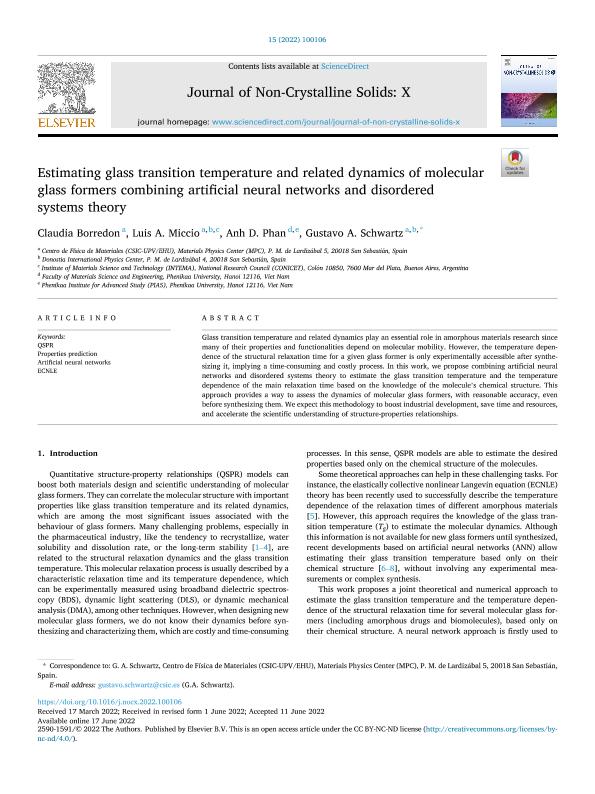Artículo
Estimating glass transition temperature and related dynamics of molecular glass formers combining artificial neural networks and disordered systems theory
Fecha de publicación:
09/2022
Editorial:
Elsevier
Revista:
Journal of Non-Crystalline Solids: X
e-ISSN:
2590-1591
Idioma:
Inglés
Tipo de recurso:
Artículo publicado
Clasificación temática:
Resumen
Glass transition temperature and related dynamics play an essential role in amorphous materials research since many of their properties and functionalities depend on molecular mobility. However, the temperature dependence of the structural relaxation time for a given glass former is only experimentally accessible after synthesizing it, implying a time-consuming and costly process. In this work, we propose combining artificial neural networks and disordered systems theory to estimate the glass transition temperature and the temperature dependence of the main relaxation time based on the knowledge of the molecule's chemical structure. This approach provides a way to assess the dynamics of molecular glass formers, with reasonable accuracy, even before synthesizing them. We expect this methodology to boost industrial development, save time and resources, and accelerate the scientific understanding of structure-properties relationships.
Palabras clave:
ARTIFICIAL NEURAL NETWORKS
,
ECNLE
,
PROPERTIES PREDICTION
,
QSPR
Archivos asociados
Licencia
Identificadores
Colecciones
Articulos(INTEMA)
Articulos de INST.DE INV.EN CIENCIA Y TECNOL.MATERIALES (I)
Articulos de INST.DE INV.EN CIENCIA Y TECNOL.MATERIALES (I)
Citación
Borredon, Claudia; Miccio, Luis Alejandro; Phan, Anh D.; Schwartz, Gustavo A.; Estimating glass transition temperature and related dynamics of molecular glass formers combining artificial neural networks and disordered systems theory; Elsevier; Journal of Non-Crystalline Solids: X; 15; 9-2022; 1-8
Compartir
Altmétricas




